Electronic Components Sourcing
South-Electronic
Unlock Precision and Reliability with South-Electronic, With flexible ordering options, a highly experienced team, and competitive prices straight from our factory, we give your business the power to succeed.
Your Premier Source for Electronic Component
Welcome to South-Electronic, where we specialize in delivering top-tier electronic components tailored to your unique needs. Our commitment to precision and dependability ensures that your applications, whether in consumer electronics, automotive, or industrial sectors, receive only the best.
Get a quote now and take your projects to new heights!
Why Choose South-Electronic ?
-
Custom Solutions
Tailor-Made for your project.
Work closely with South-Electronic to customize your PCB solution to ensure it precisely meets your specific requirements. Whether it's a specialized component or a complex design, you can rely on us to provide the products you need. -
Premium Quality
You deserve the best, and quality is our top priority.
With our rigorous quality control processes, including thorough inspections and testing, we guarantee that your products will meet the highest standards. Our PCBs are defect-free, so you can count on them to perform reliably in your production. -
Clear Communication
Provide you with responsive, clear and efficient service.
That’s why we provide clear, responsive support throughout the entire process. Whether you have a question or need an update, we’re here to keep you informed and make sure your project stays on track. -
Competitive Pricing
You want the best quality at the best price.
That’s why we offer top-quality PCBs at competitive prices. You can maximize your profit margins without sacrificing the high standards you require. We offer cost-effective solutions without cutting corners on quality, so you can stay ahead of the competition. -
Fast Global Shipping
You need a partner who can keep up with your fast-paced business.
We offer global shipping with fast turnaround times, so your PCBs arrive when you need them. With our reliable logistics, you don’t have to worry about delays. You can stay on schedule and keep your production running smoothly.
Related Project We had Done
Customer Reviews
Common Questions
Most Popular Questions
Send us a message
The more detailed you fill out, the faster we can move to the next step.
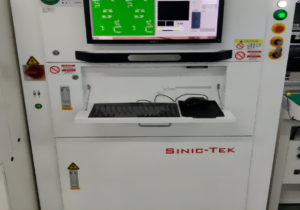
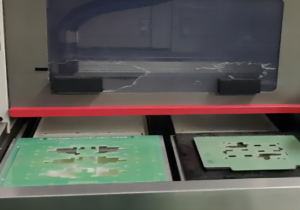
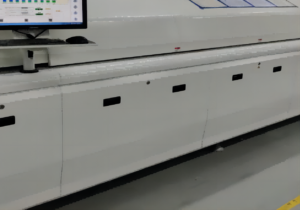
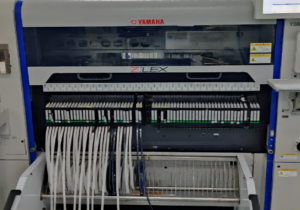
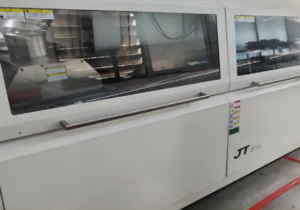
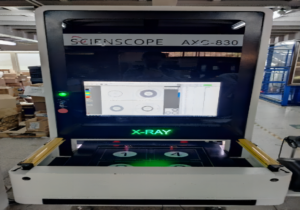

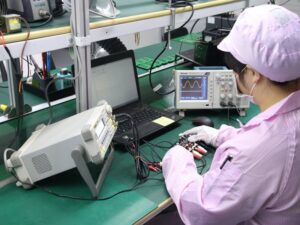

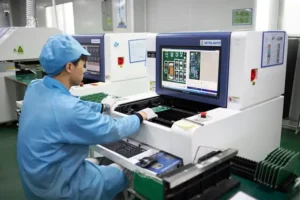



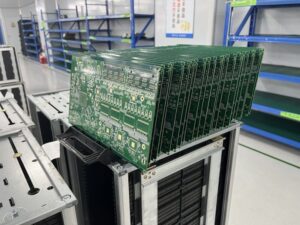

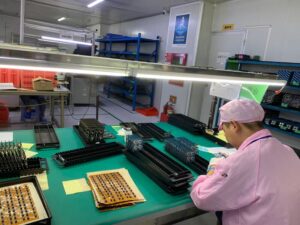



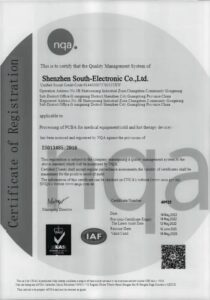
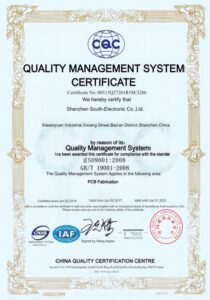







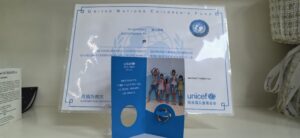

The Complete Guide For Electronic Components Sourcing
Contents
Chapter 1
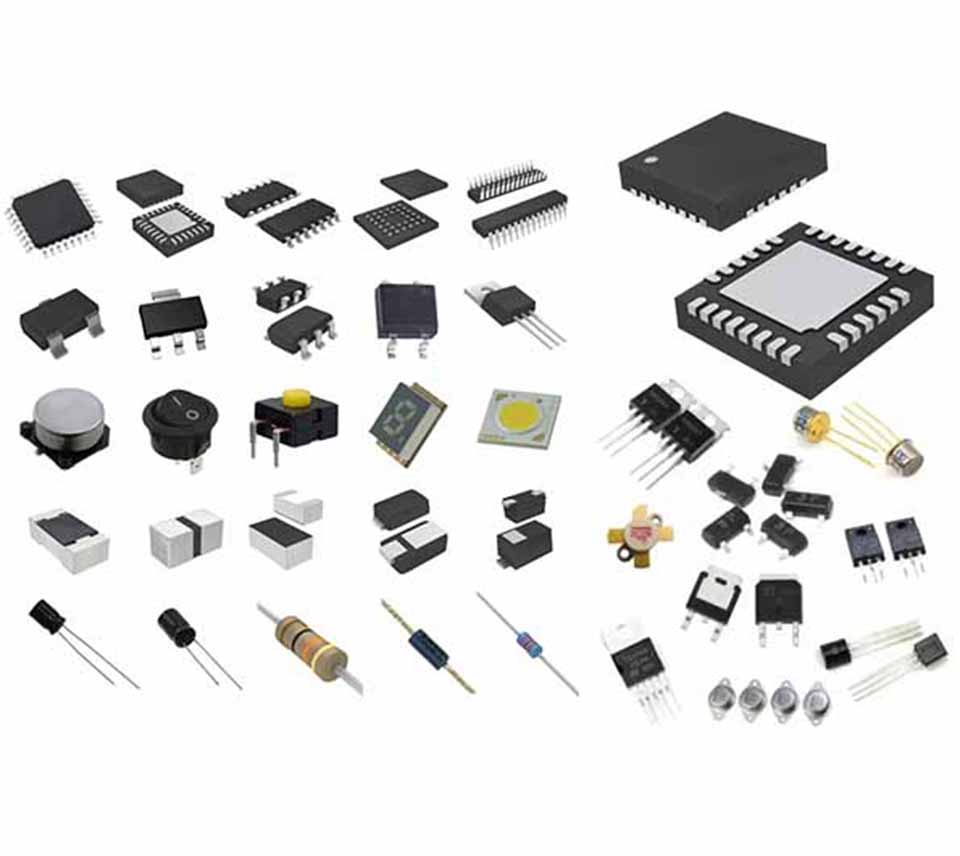
Introduction to Electronic Components Sourcing
Definition and Importance of Sourcing Electronic Components
These parts can include resistors, capacitors, integrated circuits, connectors, and many others. Sourcing is important for manufacturers, engineers, and designers because the quality and reliability of these parts affect the performance and longevity of the final products.
Here are some reasons why sourcing electronic components is important:
- Quality Assurance: Sourcing high-quality components ensures that the final product meets industry standards and consumer expectations. This is vital in sectors such as automotive and medical, where component failure can have serious consequences.
- Cost Efficiency: Strategic sourcing helps in minimizing production costs. By negotiating favorable terms and finding competitive pricing, businesses can improve their profit margins without compromising on quality.
- Supply Chain Stability: Reliable sourcing helps mitigate risks associated with supply chain disruptions. Building strong relationships with trusted suppliers can provide assurance of consistent component availability.
Overview of Industries Relying on Electronic Components
Here are some industries that rely on electronic components:
- Consumer Electronics: From smartphones to televisions, consumer electronics heavily depend on various components for functionality and performance.
- Automotive: Modern vehicles utilize numerous electronic components for safety systems, navigation, and entertainment, making sourcing critical for manufacturers in this sector.
- Healthcare: Medical devices require precision-engineered components to ensure safety and reliability, underscoring the need for stringent sourcing practices.
- Industrial Automation: Industries utilizing automation technologies rely on electronic components to enhance efficiency and productivity, making quality sourcing essential for operational success.
- Telecommunications: The telecom industry depends on high-quality components for reliable communication networks, highlighting the need for effective sourcing strategies.
In conclusion, sourcing electronic components is important in many industries. By understanding why sourcing quality components is important and what industries use electronic components, you can make better decisions and have better products.
Chapter 2
Understanding Your Sourcing Need
Identifying Project Requirements
Before you start the sourcing process, it’s important to know exactly what you need. This will not only help you streamline the sourcing process, but it will help ensure that the final product meets your expectations for performance and functionality. Here are some key steps to help you figure out what you need:
Define the Purpose: Start by outlining the intended application of the electronic product. Consider what functions the device must perform and how the components will contribute to these functionalities.
Determine Specifications: Identify the specific technical specifications for each component, including voltage, current ratings, size, and power requirements. This may involve consulting with engineers or referencing design documentation to ensure that all parameters are considered.
Establish Budget Constraints: Set a budget for sourcing components, factoring in not just the cost of the parts themselves but also additional expenses such as shipping, taxes, and any potential customs fees.
Timeline Considerations: Understand the project timeline and how component lead times will impact your schedule. This is crucial for maintaining project momentum and meeting deadlines.
Quality and Compliance Requirements: Depending on the industry, certain components may need to meet specific quality standards or regulations (e.g., RoHS compliance for electronics). Identifying these requirements early helps in selecting the right suppliers.
Types of Electronic Components
Once project requirements are established, it’s important to understand the types of electronic components you may need. Components can be categorized into three main types: passive, active, and electromechanical.
Passive Components: These components do not require an external power source to operate. They play a vital role in storing, dissipating, or filtering electrical energy. Common examples include:
- Resistors: Control the flow of electrical current.
- Capacitors: Store and release electrical energy.
- Inductors: Store energy in a magnetic field when current flows through them.
Active Components: Unlike passive components, active components require an external power source to function. They are essential for signal amplification and processing. Key examples include:
- Transistors: Used for switching and amplification.
- Integrated Circuits (ICs): Miniaturized electronic circuits that can perform various functions, such as amplification, signal processing, and data storage.
- Diodes: Allow current to flow in one direction only, commonly used in rectification.
Electromechanical Components: These components combine electrical and mechanical processes, enabling interaction with the physical environment. Examples include:
- Relays: Electrically operated switches that control circuits.
- Motors: Convert electrical energy into mechanical motion.
- Sensors: Detect physical phenomena (such as temperature, light, or motion) and convert them into electrical signals.
By understanding your specific sourcing needs and the types of components required, you can make informed decisions that align with your project goals. This foundational knowledge will set the stage for effective supplier selection and successful electronic components sourcing.
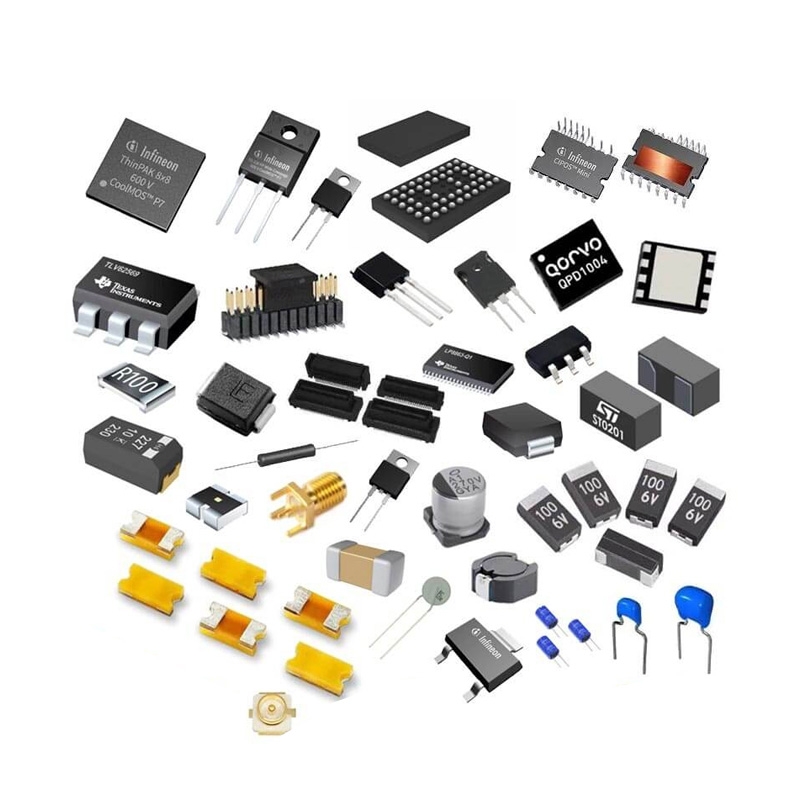
Chapter 3
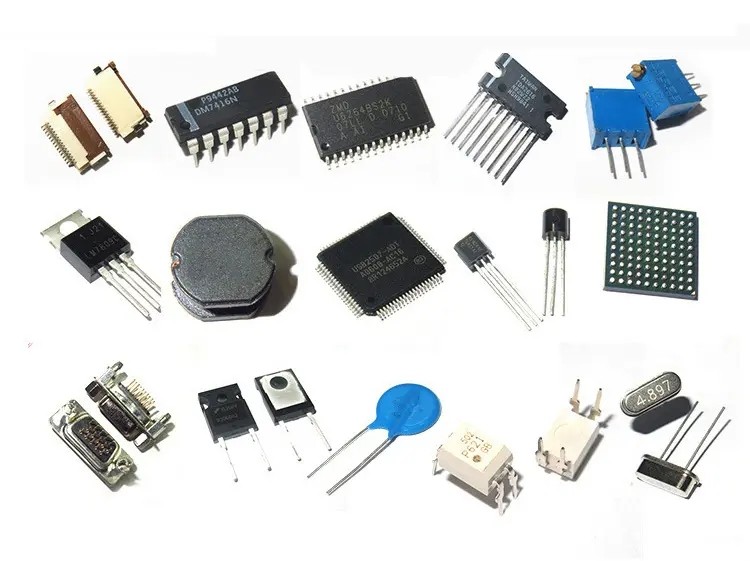
Researching Potential Supplier
How to Find Reputable Suppliers
Finding reputable suppliers for electronic components is a crucial step in ensuring the quality and reliability of your projects. Here are several effective strategies to identify trustworthy suppliers:
Online Marketplaces and Directories: Utilize online platforms such as Alibaba, Digi-Key, Mouser Electronics, and Octopart. These sites allow you to search for suppliers based on specific components and provide user reviews and ratings, helping you gauge the reliability of each supplier.
Industry Trade Shows and Expos: Attending trade shows and industry expos is an excellent way to meet potential suppliers face-to-face. These events allow you to see products firsthand, ask questions, and establish direct relationships with manufacturers and distributors.
Professional Networks and Forums: Engage with professional networks, forums, and social media groups focused on electronics and manufacturing. Platforms like LinkedIn can be particularly useful for connecting with industry professionals who can recommend reliable suppliers.
Referrals and Recommendations: Ask colleagues or industry contacts for recommendations based on their experiences. Word-of-mouth referrals can lead you to reputable suppliers who have a proven track record.
Local and Regional Suppliers: Consider looking for suppliers within your region. Local suppliers can often provide faster shipping times and easier communication, making it simpler to manage your sourcing needs.
Evaluating Supplier Credentials and Certifications
Once you have identified potential suppliers, it is essential to evaluate their credentials and certifications to ensure they meet your quality and reliability standards. Key factors to consider include:
Quality Certifications: Check for industry-recognized quality certifications such as ISO 9001, which indicates a commitment to quality management practices. Certifications relevant to specific industries (e.g., ISO 13485 for medical devices) are also important.
Supplier History and Reputation: Research the supplier’s history, including how long they have been in business and their reputation within the industry. Look for reviews, testimonials, and case studies that highlight their reliability and service quality.
Manufacturing Capabilities: Assess the supplier’s manufacturing capabilities, including their technology, equipment, and production processes. Understanding their capabilities will help determine if they can meet your volume and quality requirements.
Compliance with Industry Standards: Ensure that the supplier complies with relevant industry standards, such as RoHS (Restriction of Hazardous Substances) or REACH (Registration, Evaluation, Authorization, and Restriction of Chemicals). Compliance indicates adherence to environmental and safety regulations.
Customer Support and Communication: Evaluate the supplier’s responsiveness and willingness to provide support. Good communication is vital for resolving issues and ensuring a smooth sourcing process.
By thoroughly researching potential suppliers and evaluating their credentials, you can make informed decisions that enhance the quality and reliability of your electronic components sourcing efforts. This diligence ultimately contributes to the success of your projects.
Chapter 4
Key Considerations for Supplier Selection
When you’re choosing a supplier for electronic components, you need to think about a few things to make sure it works out for you. You want to know how they make sure they’re sending you good stuff, how much they charge, and when you can expect to get your order.
Quality Control Measures
Quality control is paramount in the sourcing of electronic components, as it directly affects the performance and reliability of your products. When evaluating suppliers, consider the following aspects of their quality control measures:
Testing and Inspection Procedures: Inquire about the specific testing and inspection protocols the supplier employs. Effective suppliers should have robust testing procedures in place to verify the quality of components before they are shipped. This may include electrical testing, visual inspections, and stress testing.
Certifications and Standards Compliance: Check if the supplier adheres to relevant industry standards and certifications, such as ISO 9001 for quality management systems. Compliance with standards ensures that the supplier follows best practices in manufacturing and quality assurance.
Defect Rate and Return Policies: Ask about the supplier’s historical defect rate and their policies for handling defective components. A reputable supplier should have a low defect rate and a clear, fair return policy for any faulty products.
Continuous Improvement Practices: Evaluate whether the supplier engages in continuous improvement initiatives, such as Lean Manufacturing or Six Sigma methodologies. Suppliers committed to continuous improvement are more likely to maintain high quality standards over time.
Pricing Structures and Payment Terms
Understanding the pricing structure and payment terms is crucial for managing your budget and cash flow. Consider the following factors:
Pricing Models: Suppliers may offer different pricing models, such as fixed pricing, tiered pricing based on order volume, or dynamic pricing based on market conditions. Understanding these models will help you choose the most cost-effective option for your sourcing needs.
Bulk Discounts: Inquire about potential discounts for bulk orders. Many suppliers offer reduced rates for larger quantities, which can significantly lower your overall costs.
Payment Terms: Review the supplier’s payment terms, including the timeline for payment and accepted methods (e.g., credit terms, wire transfers). Flexible payment options can help manage cash flow and make the procurement process smoother.
Hidden Costs: Be aware of any hidden costs that may affect the total price, such as shipping fees, customs duties, or handling charges. Clarifying these costs upfront will help you avoid unexpected expenses later.
Lead Times and Delivery Options
Timely delivery of components is essential for maintaining project schedules and meeting deadlines. When assessing suppliers, consider their lead times and delivery options:
Standard Lead Times: Ask about the typical lead times for the components you need. Suppliers should provide clear estimates for order fulfillment based on their inventory and production capacity.
Expedited Shipping Options: Inquire if the supplier offers expedited shipping options for urgent orders. Understanding the availability of faster delivery methods can be critical for time-sensitive projects.
Tracking and Communication: Ensure that the supplier provides tracking information for shipments and maintains open lines of communication throughout the delivery process. Reliable tracking allows you to monitor your order’s status and anticipate any potential delays.
Local vs. International Shipping: Consider the implications of sourcing from local versus international suppliers. While local suppliers may offer quicker turnaround times, international suppliers might provide better pricing or a wider range of components. Balancing these factors is essential for effective supply chain management.
By carefully evaluating these key considerations—quality control measures, pricing structures, and lead times—you can make informed decisions when selecting suppliers for your electronic components sourcing needs, ultimately enhancing the success of your projects.
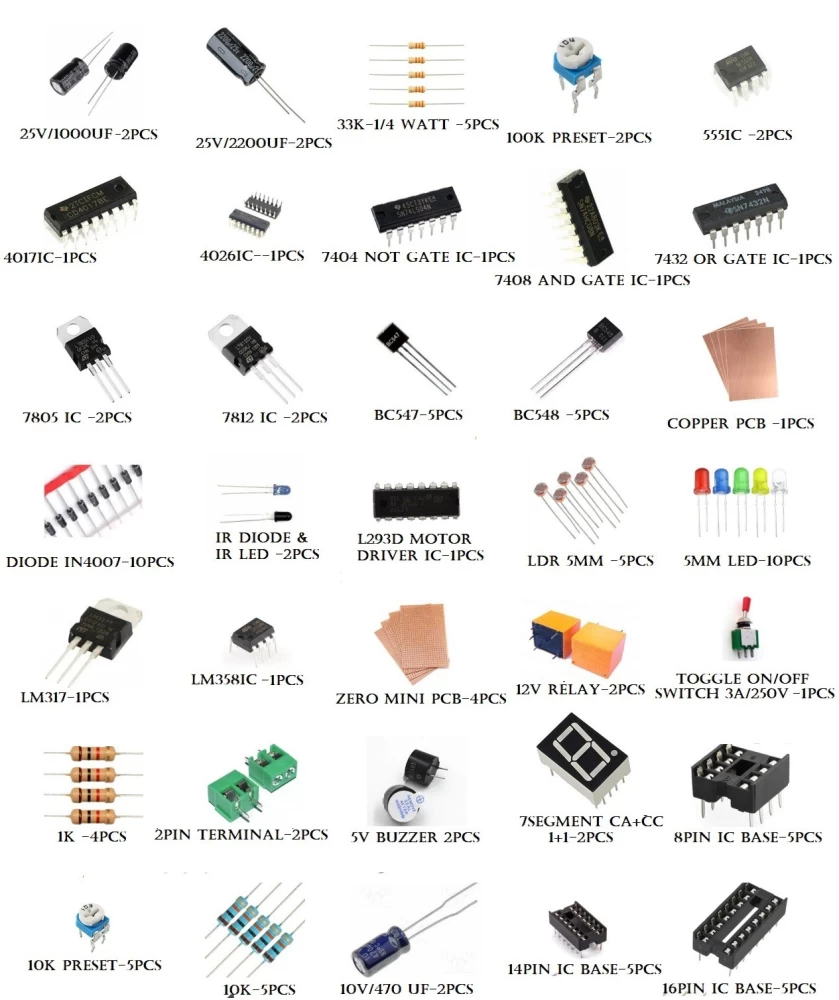
Chapter 5
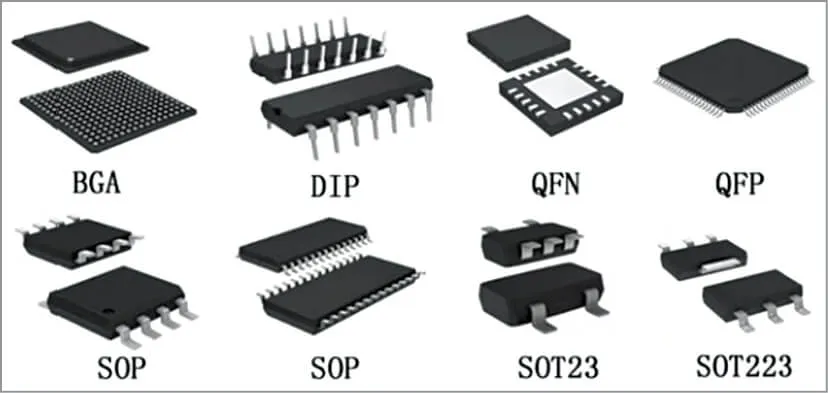
Negotiating with Supplier
Here are some tips to help you negotiate effectively with suppliers, as well as some insights into minimum order quantities (MOQs) and bulk pricing.
Tips for Effective Negotiation
Do Your Homework: Before entering negotiations, gather as much information as possible about the supplier, their products, and the market rates. Understanding industry standards and competitor pricing can provide leverage during discussions.
Establish Clear Objectives: Define your goals for the negotiation, including desired pricing, delivery timelines, and quality requirements. Knowing what you want will help you stay focused and make informed decisions during the negotiation process.
Build Rapport: Establishing a positive relationship with the supplier can create a more collaborative negotiation environment. Engage in friendly conversation, express appreciation for their products, and show respect for their expertise.
Be Open to Compromise: Negotiation is often about finding a middle ground. Be willing to make concessions in certain areas to achieve your primary objectives. For example, if the supplier cannot meet your price point, consider negotiating for better payment terms or improved delivery schedules.
Utilize Multiple Quotes: Gather quotes from several suppliers to create a competitive atmosphere. When suppliers know they are competing for your business, they may be more willing to negotiate on price and terms.
Ask Questions: Engage in open dialogue by asking questions about their pricing, lead times, and policies. This not only helps clarify details but also demonstrates your interest in understanding their business practices.
Document Everything: Once terms are agreed upon, document all aspects of the negotiation in a formal contract. This should include pricing, delivery schedules, quality expectations, and payment terms to ensure clarity and accountability.
Understanding Minimum Order Quantities (MOQ) and Bulk Pricing
Minimum Order Quantities (MOQ): MOQs are the smallest quantities of a product that a supplier is willing to sell. Understanding MOQs is essential for managing inventory and costs. Consider the following points:
- Assess Your Needs: Determine how many components you realistically require for your project. This will help you negotiate an MOQ that aligns with your needs without overcommitting to excess inventory.
- Negotiate MOQs: If the supplier’s MOQ is higher than you can accommodate, discuss the possibility of lowering the MOQ, especially if you plan to establish a long-term relationship or have future projects in the pipeline.
Bulk Pricing: Suppliers often offer discounts for bulk orders, which can significantly reduce your per-unit costs. Here’s what to consider:
- Identify Bulk Discount Tiers: Understand the pricing structure for bulk orders. Many suppliers have tiered pricing that decreases the unit price as the order quantity increases.
- Calculate Total Cost Savings: When negotiating bulk pricing, calculate the total cost savings to ensure it fits within your budget. Compare this against your estimated usage to determine if placing a larger order is beneficial in the long run.
- Plan for Future Needs: If you anticipate ongoing demand for a component, negotiating bulk pricing can be advantageous. This approach not only saves money but also ensures a consistent supply of necessary components.
In summary, effective negotiation with suppliers involves thorough preparation, clear communication, and a willingness to find mutually beneficial terms. Understanding MOQs and bulk pricing is vital for making informed purchasing decisions and optimizing costs.
Chapter 6
Evaluating Component Quality
Importance of Quality Assurance
Quality assurance is a big deal when it comes to sourcing electronic components. It has a direct impact on the performance, reliability, and safety of the final product. Here are some of the benefits you can expect when you prioritize high-quality components:
Reliability and Performance: Quality components are less likely to fail, ensuring that the end product operates as intended. This is especially important in applications where safety and functionality are paramount, such as in medical devices or automotive systems.
Reduced Costs: Sourcing high-quality components can lead to lower overall costs by minimizing the risk of defects and failures. This reduces warranty claims, returns, and the need for costly repairs or replacements.
Enhanced Reputation: Companies that prioritize quality assurance in their sourcing practices build a stronger reputation in the marketplace. Consistently delivering reliable products fosters customer trust and loyalty, which can lead to repeat business and referrals.
Regulatory Compliance: Many industries have strict regulations regarding component quality and safety. Ensuring that components meet these standards helps avoid legal issues and penalties.
Common Quality Certifications
When evaluating the quality of electronic components, it’s essential to consider the certifications that suppliers hold. These certifications demonstrate adherence to recognized industry standards and practices. Some of the most common quality certifications include:
ISO 9001: This is one of the most widely recognized quality management system certifications. It signifies that a supplier follows standardized processes to ensure consistent quality in their products and services. Suppliers with ISO 9001 certification are committed to continuous improvement and customer satisfaction.
ISO 13485: Specifically relevant to the medical device industry, this certification indicates that a supplier has a quality management system tailored to meet regulatory requirements for medical devices. It assures that components used in medical applications meet strict safety and efficacy standards.
RoHS (Restriction of Hazardous Substances): This certification ensures that electronic components do not contain certain hazardous materials, such as lead, mercury, and cadmium. Compliance with RoHS is crucial for manufacturers looking to sell products in the European Union and many other markets.
REACH (Registration, Evaluation, Authorization, and Restriction of Chemicals): Similar to RoHS, REACH focuses on the safe use of chemicals in products. Suppliers compliant with REACH regulations provide assurance that their components do not contain harmful substances that could pose risks to human health or the environment.
IPC Standards: The Institute of Printed Circuits (IPC) provides a range of standards related to the design, manufacturing, and assembly of electronic components. Certifications such as IPC-A-610 for acceptable soldering practices and IPC-2221 for PCB design ensure components are produced to industry-recognized standards.
Evaluating component quality through these certifications not only aids in selecting reliable suppliers but also ensures that the components sourced will meet the necessary performance, safety, and regulatory standards. By prioritizing quality assurance, businesses can enhance the overall success and reputation of their products in the market.
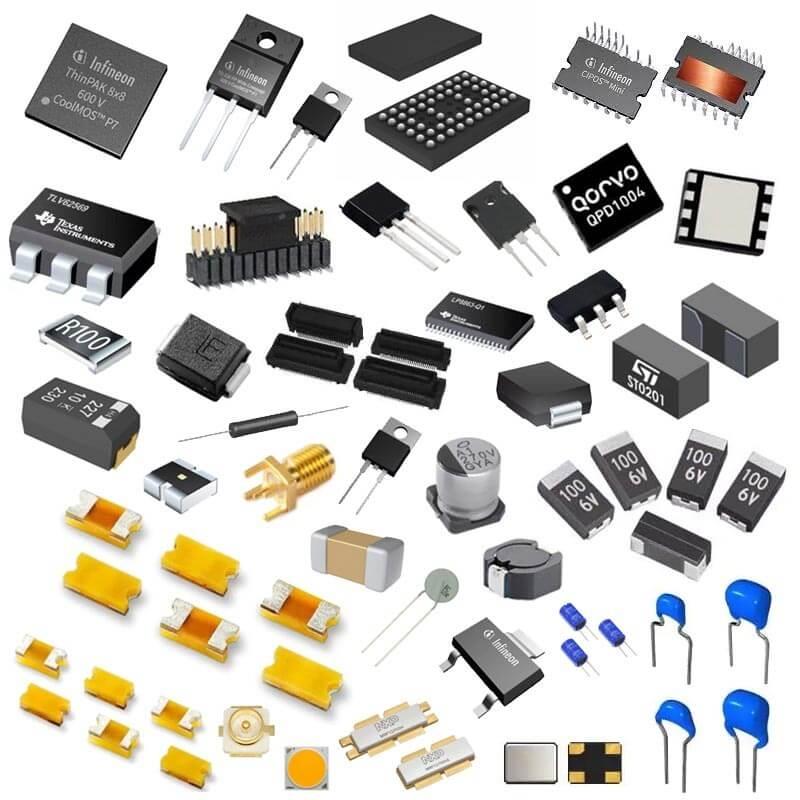
Chapter 7

Building Strong Supplier Relationship
Building strong, lasting relationships with suppliers is key to ensuring smooth operations, high-quality products, and successful long-term projects. Establishing trust, maintaining open communication, and fostering collaboration can lead to a mutually beneficial partnership. Below are strategies for effective communication and the long-term benefits of building strong supplier relationships.
Strategies for Effective Communication
Establish Clear Expectations: Right from the beginning of the relationship, clearly define expectations for product quality, delivery timelines, pricing, and other important aspects of the partnership. Set realistic goals for both parties and ensure these are communicated effectively to avoid misunderstandings later on.
Regular Communication: Keep in constant contact with your suppliers throughout the entire process, from sourcing to delivery. Regular communication ensures that both parties are aligned, helping to anticipate potential issues before they arise. This includes frequent updates on order status, potential delays, or changes in requirements. Email, phone calls, and video meetings are essential tools for maintaining strong communication.
Transparency: Be transparent about your needs, challenges, and expectations. If your business experiences fluctuations in demand, let your suppliers know so they can adjust their production and supply chain strategies. Likewise, encourage your suppliers to share their challenges with you, such as production delays or material shortages, so that both parties can work together to resolve these issues.
Collaborative Problem Solving: If issues arise with product quality, delivery schedules, or any other aspects of the partnership, approach the situation collaboratively rather than in an adversarial manner. Work together to find solutions and keep the focus on maintaining a productive and successful relationship. Establishing a problem-solving mentality fosters mutual respect and cooperation.
Feedback Loop: Constructive feedback is essential in strengthening supplier relationships. Provide feedback not just when things go wrong, but also when a supplier performs exceptionally well. This helps to build trust and loyalty, as suppliers appreciate knowing what they’re doing right. Likewise, be receptive to feedback from the supplier about your business practices, which can help streamline the process and build mutual trust.
Personalized Interaction: Take the time to build rapport and understand your supplier’s business culture. Personalize your interactions by addressing key contacts by name, remembering important dates like company anniversaries, and showing genuine interest in their operations. These personal touches contribute to a stronger, more positive relationship.
Long-Term Partnership Benefits
Better Pricing and Terms: A strong, long-term relationship with a supplier can lead to more favorable pricing and payment terms. Over time, as trust and reliability are established, you may be able to negotiate better bulk pricing, discounts, and more flexible payment options. Suppliers are more likely to offer competitive pricing to clients they view as long-term partners, particularly if you can demonstrate consistency and loyalty in your orders.
Improved Lead Times and Priority Support: Suppliers are more likely to prioritize your orders and provide faster turnaround times if they view you as a reliable, long-term customer. This can be especially valuable when you have urgent needs or tight deadlines. In addition, long-term relationships may result in better communication, where you’re kept informed of potential delays or supply chain disruptions ahead of time.
Customization and Tailored Solutions: As your business grows, so does your relationship with the supplier. Suppliers who know your business inside and out are more likely to offer custom solutions or specialized products that are tailored to your unique needs. They may also be more willing to accommodate changes or special requests, such as smaller order quantities, different packaging, or expedited shipping.
Supply Chain Stability: A reliable, long-term partnership enhances the stability of your supply chain. Suppliers are more likely to be flexible and work with you during difficult times, such as when you face fluctuating demand or when global supply chain disruptions occur. Having a strong relationship ensures that you’re a priority when there are shortages or delivery challenges, and your supplier will work to meet your needs, even in uncertain times.
Innovation and Collaboration: Suppliers who see you as a trusted partner are more likely to share insights, innovations, and new product offerings. Over time, suppliers will gain an in-depth understanding of your product requirements, and this collaborative relationship can lead to improved designs, new product ideas, or more efficient manufacturing techniques. This can help your business stay ahead of the competition and enhance the overall quality of your products.
Long-Term Cost Savings: With a strong relationship, suppliers may be more inclined to offer long-term contracts with fixed pricing, helping to mitigate price increases and improve your budgeting predictability. Long-term partners can also help you optimize your sourcing strategy to reduce waste and inefficiencies, contributing to cost savings over time.
In conclusion, building strong supplier relationships is not just about transactional interactions; it’s about creating a partnership based on mutual trust, respect, and collaboration. By focusing on effective communication and investing in long-term relationships, you position your business for ongoing success and gain access to a range of benefits that can help you improve efficiency, reduce costs, and ultimately achieve your goals more effectively.
Chapter 8
Navigating Supply Chain Challenge
Supply chain challenges are a given in any procurement process, and electronic components sourcing is no exception. As global supply chains become more complex, it’s important to understand potential risks and develop strategies to mitigate these disruptions to maintain consistent product availability and meet project deadlines.
Identifying Potential Risks in Sourcing
Several key risks can affect the stability and efficiency of your electronic components supply chain:
Supply Shortages: Fluctuations in demand, production delays, or raw material shortages can lead to limited availability of components. This is particularly common with semiconductor components, where sudden spikes in demand (such as during technological innovations or supply chain crises) can create shortages.
Quality Control Issues: Sourcing from suppliers that do not adhere to stringent quality standards can lead to defective components or subpar performance in final products. Low-quality components can cause failures, delays, or safety concerns, and the financial cost of rework or product recalls can be significant.
Logistics and Shipping Delays: Shipping and logistics can be disrupted by factors like bad weather, geopolitical issues, port congestion, or natural disasters. Delays in the transportation of components can severely affect lead times and overall project timelines, especially for international sourcing.
Currency Fluctuations: For companies sourcing components from international suppliers, exchange rate fluctuations can impact the cost of goods and affect profitability. Currency volatility can lead to unexpected price increases, which may impact your budgeting and pricing strategies.
Regulatory Changes: Changes in trade regulations, tariffs, or environmental laws can suddenly increase costs or complicate sourcing efforts. For example, new import/export restrictions or trade wars can lead to additional tariffs or duties on components sourced from specific countries.
Supplier Financial Stability: A supplier’s financial health can also pose a risk. Suppliers facing financial difficulties or operational challenges may be unable to meet delivery deadlines or maintain quality standards. A sudden supplier closure or bankruptcy can disrupt your supply chain and delay production.
Geopolitical Instability: Political unrest, conflicts, or changes in government policies in the countries where suppliers operate can lead to supply chain interruptions, increased shipping costs, or restrictions on imports/exports.
Strategies for Mitigating Supply Chain Disruptions
While it is impossible to eliminate supply chain risks entirely, there are several strategies to mitigate these challenges and ensure a more resilient sourcing process:
Diversify Your Supplier Base: One of the most effective ways to mitigate risk is by working with multiple suppliers across different geographical regions. Relying on a single supplier for key components creates a significant risk. By diversifying your supply chain, you can reduce the impact of disruptions from one supplier or region and maintain continuity in production.
Build Strong Supplier Relationships: Strong, long-term relationships with suppliers can help ensure priority access to critical components during times of shortage or high demand. Regular, transparent communication with suppliers enables you to anticipate potential disruptions and take proactive steps to manage them. A trusted supplier will also be more likely to offer alternatives or find solutions when problems arise.
Stock Safety Inventory: For key components that are vital to your production process, consider maintaining a safety stock or buffer inventory. This is especially important for components with long lead times or those prone to supply shortages. By building up a reserve, you can avoid production delays caused by supply chain disruptions.
Monitor and Assess Supplier Risk: Regularly assess your suppliers’ financial health, operational capacity, and compliance with regulations. This proactive approach allows you to identify potential risks early, such as a supplier struggling financially or facing logistical challenges. Additionally, conducting due diligence on the supplier’s manufacturing processes, labor practices, and sustainability initiatives can help you anticipate possible disruptions.
Flexible Contractual Terms: In your contracts with suppliers, include flexible terms that allow for renegotiation in the event of unforeseen disruptions. Clauses related to force majeure, which can protect both parties during extreme events (e.g., natural disasters, pandemics), can provide some level of protection against unexpected supply chain interruptions.
Invest in Technology: Technology plays an important role in navigating supply chain challenges. Use supply chain management software, enterprise resource planning (ERP) systems, or vendor management systems to monitor and track inventory levels, orders, shipments, and supplier performance in real-time. This visibility enables you to make data-driven decisions and quickly respond to any disruptions.
Develop Contingency Plans: Prepare for potential disruptions by having contingency plans in place. These plans should outline actions to take if a supplier fails to deliver, if shipping delays occur, or if regulatory issues arise. Having backup suppliers, alternative shipping routes, and pre-negotiated emergency terms in place can help you react quickly and minimize the impact of disruptions.
Collaborate with Suppliers on Risk Management: Work closely with your suppliers to create joint risk management plans. Suppliers with a deep understanding of your sourcing needs are more likely to prioritize your orders and find solutions if issues arise. Collaborative risk management can also lead to more efficient operations, such as joint forecasting and better coordination of lead times.
Improve Demand Forecasting: Accurate demand forecasting helps suppliers plan their production schedules and avoid shortages. Work closely with suppliers to share demand projections and historical data. This allows them to manage their own supply chains more effectively and reduces the risk of order fulfillment delays.
By employing these strategies, businesses can build a more resilient supply chain that is better equipped to handle disruptions, reduce risks, and ensure timely delivery of high-quality components.

Chapter 9
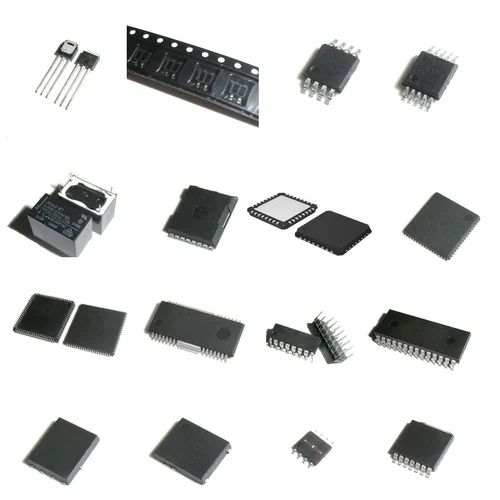
Utilizing Technology in Sourcing
In today’s fast-paced, competitive market, it’s essential to leverage technology to streamline the sourcing process and efficiently procure electronic components. The right tools and platforms can improve decision-making, enhance transparency, and reduce the time and effort required for sourcing. Automation can also play a key role in optimizing workflows, reducing errors, and accelerating supply chain operations.
Tools and Platforms for Electronic Components Sourcing
Electronic Component Marketplaces: Platforms like Digi-Key, Mouser Electronics, RS Components, and Octopart are some of the most widely used tools for sourcing electronic components. These online marketplaces provide access to a vast array of components from different manufacturers, along with detailed product specifications, availability, and pricing. Many platforms also feature comparison tools that allow you to quickly find the best options based on parameters like part number, price, lead time, and certifications.
Supply Chain Management (SCM) Software: SCM tools like SAP Ariba, Oracle Procurement Cloud, and Zycus help businesses manage their supply chains end-to-end. These platforms allow businesses to track orders, manage supplier relationships, and monitor inventory in real-time. They provide visibility into the entire procurement cycle, from sourcing to delivery, and help optimize supplier selection and inventory management.
Bill of Materials (BOM) Management Tools: Tools such as Upverter, Altium, or BOM.com help engineers and manufacturers create and manage their BOMs efficiently. These platforms allow you to track component specifications, availability, and costs, as well as automatically source components based on your design. Some BOM management platforms even integrate with supply chain management tools, providing end-to-end visibility.
Electronic Design Automation (EDA) Software: For more complex electronic designs, EDA tools such as Cadence, KiCad, and Eagle provide an integrated environment for designing, simulating, and sourcing components for printed circuit boards (PCBs). Many EDA platforms have direct integrations with parts suppliers, enabling designers to select and order components directly within the design environment.
Supplier Portals: Some suppliers offer custom portals or platforms that allow customers to place orders, check component availability, track shipments, and access technical support. These portals help ensure direct and seamless communication between buyers and suppliers, streamlining the ordering process.
Inventory Management Software: Tools like TradeGecko, NetSuite, and QuickBooks Commerce help businesses monitor their inventory levels and automate reorder points. By keeping track of current stock and predicting future demand, these tools help ensure you always have the right amount of components on hand without overstocking.
The Role of Automation in Streamlining the Process
Automation is rapidly transforming the electronic components sourcing process by reducing manual tasks, minimizing errors, and speeding up the procurement cycle. Here are a few ways automation is being used in sourcing:
Automated Order Management: By automating order processing, companies can streamline the entire procurement workflow. Systems that automatically generate purchase orders based on stock levels or upcoming project needs reduce the need for manual intervention. Automation can also improve accuracy by eliminating human errors in order entry.
Supply Chain Visibility: Automated supply chain management platforms provide real-time updates on inventory levels, order status, and shipping progress. This visibility helps businesses proactively manage potential disruptions by quickly identifying supply chain issues and addressing them before they impact the production schedule.
Predictive Analytics and Demand Forecasting: Machine learning and artificial intelligence (AI) are playing an increasingly important role in demand forecasting and inventory management. These technologies analyze historical data to predict future demand trends, helping businesses optimize their sourcing strategies, reduce stockouts, and avoid overstocking.
Supplier Performance Monitoring: Automation tools allow businesses to track supplier performance automatically, evaluating metrics such as on-time delivery rates, product quality, and responsiveness. This data enables better decision-making when selecting and managing suppliers, ensuring that you work with the most reliable partners.
Automated Invoice Processing: Automated invoice processing systems can match invoices to purchase orders and contracts, reducing the time spent on manual data entry and verification. This automation not only speeds up payment cycles but also ensures greater accuracy in financial records and vendor billing.
Digital Procurement Platforms: Many companies are turning to digital procurement platforms that integrate with existing enterprise resource planning (ERP) systems to automate procurement workflows. These platforms allow businesses to create, approve, and track purchase orders, receive quotes from suppliers, and manage payments—all from a centralized, automated system.
Automated Component Testing: In some cases, automation is used for testing components before they are shipped to ensure they meet specified quality standards. Automated testing systems reduce human error and improve the accuracy and speed of quality checks, ensuring that only high-quality components reach the production line.
Benefits of Technology and Automation in Sourcing
Increased Efficiency: Automation and digital platforms significantly reduce the time and effort spent on manual tasks, allowing procurement teams to focus on higher-value activities such as supplier relationship management and strategic sourcing.
Cost Savings: By optimizing inventory levels, reducing procurement errors, and improving supplier selection, businesses can reduce operational costs. Automated tools help prevent overstocking or stockouts, ensuring cost-effective component procurement.
Better Decision-Making: Access to real-time data, analytics, and performance monitoring tools enables informed decision-making. Procurement managers can assess supplier performance, identify cost-saving opportunities, and improve sourcing strategies based on accurate, up-to-date information.
Improved Collaboration: Technology fosters better collaboration between internal teams (e.g., purchasing, engineering, logistics) and suppliers. Integrated platforms enable seamless communication and sharing of data, which leads to more efficient workflows and fewer misunderstandings.
Enhanced Scalability: As businesses grow, managing procurement manually can become cumbersome. Automation and digital tools make it easier to scale sourcing efforts without overwhelming your procurement team. You can easily manage larger orders, more suppliers, and expanded product lines with minimal additional effort.
In conclusion, utilizing technology and automation in the sourcing process enhances operational efficiency, improves decision-making, and helps businesses better navigate the complexities of sourcing electronic components. By leveraging the right tools, businesses can stay competitive, reduce costs, and build more resilient supply chains.
Chapter 10
Future Outlook
The future of electronic components sourcing is shaped by several emerging trends, technological advancements, and global economic factors that will continue to evolve in the coming years. Understanding these developments is essential for staying competitive and adapting sourcing strategies to meet the demands of an increasingly complex and interconnected world.
1. Increasing Demand for Advanced Components
As technology continues to advance, the demand for more sophisticated and specialized electronic components is growing. Industries such as automotive (especially with the rise of electric vehicles and autonomous driving), consumer electronics (including wearables and IoT devices), healthcare (such as medical devices and diagnostics), and aerospace are all driving this trend. These industries require components that are not only more advanced but also more reliable and precise. As a result, suppliers will need to invest in research and development to meet these changing needs, and sourcing strategies will need to be more focused on high-performance, customized components.
2. Shift Toward Sustainability and Green Electronics
Sustainability is becoming a key priority in the electronic components industry, driven by both regulatory pressures and consumer demand. There is a growing emphasis on reducing the environmental impact of electronics throughout their lifecycle—from production to disposal. This includes sourcing components that are energy-efficient, recyclable, and free from hazardous materials, as well as complying with standards like RoHS and WEEE (Waste Electrical and Electronic Equipment). Additionally, the push for greener manufacturing processes and reducing carbon footprints is influencing sourcing decisions. Suppliers who prioritize sustainability in their operations will likely become more attractive to businesses looking to align with eco-conscious consumers and regulatory frameworks.
3. Supply Chain Digitalization and AI Integration
The increasing use of artificial intelligence (AI) and machine learning in supply chain management will transform the way electronic components are sourced. AI-powered platforms will enable businesses to predict component demand more accurately, optimize inventory management, and automate key aspects of the procurement process. Machine learning algorithms can also help identify potential supply chain disruptions before they happen, allowing businesses to take proactive measures to mitigate risks. Furthermore, digital twins (virtual representations of the supply chain) will allow companies to simulate various scenarios and optimize sourcing strategies in real time. These technological advancements will result in faster, more efficient sourcing processes with better decision-making capabilities.
4. The Rise of Nearshoring and Localization
In response to global supply chain disruptions, geopolitical tensions, and the growing need for more agile supply chains, many companies are shifting their sourcing strategies towards nearshoring or localization. This involves moving production and component sourcing closer to end markets rather than relying on far-flung suppliers. Nearshoring not only reduces lead times and shipping costs but also mitigates risks associated with international trade tariffs, political instability, and global shipping bottlenecks. As companies seek to create more resilient and responsive supply chains, the trend toward local or regional sourcing will likely intensify in the coming years.
5. Growth of E-Commerce and Digital Platforms
E-commerce platforms and online marketplaces will continue to play a significant role in electronic components sourcing. These platforms are becoming more sophisticated, offering advanced search functionalities, real-time inventory updates, and tools for direct communication between buyers and suppliers. As more suppliers and manufacturers embrace digital platforms, sourcing will become even more transparent and accessible. The convenience and speed of ordering components online, combined with better pricing transparency, will further fuel the growth of these platforms. Businesses will also increasingly rely on integrated systems that connect design, sourcing, and inventory management seamlessly, reducing administrative costs and increasing efficiency.
6. Blockchain Technology for Supply Chain Transparency
Blockchain technology, known for its secure, decentralized record-keeping capabilities, has the potential to revolutionize the electronic components sourcing process. Blockchain can improve supply chain transparency, ensuring that every step of the sourcing process is recorded and traceable. This can help prevent counterfeit components, verify the origin of materials, and provide a more secure and efficient way to track orders and deliveries. By integrating blockchain into the sourcing process, companies can enhance trust with suppliers and customers, reduce fraud, and increase overall supply chain security.
7. Global Trade and Geopolitical Shifts
As global trade continues to evolve, geopolitical factors will remain a key influence on sourcing strategies. Trade tensions, tariffs, and export controls will impact how companies source components internationally. Shifts in trade policies, such as the increasing push for protectionism or trade barriers, will encourage companies to reconsider their supply chain strategies and explore alternative sources of components. Staying adaptable and being able to pivot quickly in response to geopolitical shifts will be essential for businesses to maintain a reliable supply of components.
8. Automation in Component Manufacturing
Automation and robotics are revolutionizing the manufacturing of electronic components, making production faster, more accurate, and less reliant on manual labor. As automation technology becomes more widespread, the cost of manufacturing electronic components is expected to decrease, making it more cost-effective to source components from highly automated facilities. This shift toward automated production also means that suppliers will need to invest in advanced manufacturing technologies to remain competitive. This trend will contribute to greater availability and affordability of high-quality components in the future.
Conclusion
The future of electronic components sourcing will be defined by technological innovation, evolving market demands, and the need for more resilient, sustainable supply chains. Businesses that embrace digital tools, leverage AI and automation, and adapt to changing geopolitical and economic landscapes will be well-positioned to succeed in this rapidly evolving environment. As the industry moves toward greater integration, sustainability, and localization, those who can navigate these shifts will maintain a competitive edge, ensuring their sourcing processes are more efficient, cost-effective, and responsive to global trends.

Get in touch
Where Are We?
Industrial Park, No. 438 Donghuan Road, No. 438, Shajing Donghuan Road, Bao'an District, Shenzhen, Guangdong, China
Floor 4, Zhihui Creative Building, No.2005 Xihuan Road, Shajing, Baoan District, Shenzhen, China
ROOM A1-13,FLOOR 3,YEE LIM INDUSTRIAL CENTRE 2-28 KWAI LOK STREET, KWAI CHUNG HK
service@southelectronicpcb.com
Phone : +86 400 878 3488
Send us a message
The more detailed you fill out, the faster we can move to the next step.



